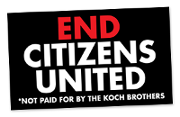Biblio
Filters: First Letter Of Title is C [Clear All Filters]
(1994). Coping with Difficult Bosses.
"There are certainly times when honest spontaneity is the key to improved human relationships, but while you are being harpooned by a hostile boss is not one of those times. It is then you need to do what actors do—communicate emotions you do not feel." (p. 20)
(1997). Core Java 1.1 Volume 2.
(1999). Core Java 2 : Volume 1 Fundamentals.
(1991). The Corporate Negaholic: How to Deal Successfully With Negative Colleagues, Managers and Corporations.
"The alternative action was to look at the inequities and the resentments and find solutions which would create a win-win outcome. Unless everyone wins, no one really wins." (p. 91)
(1993). Crazy Bosses: Spotting Them, Serving Them, Surviving Them.
"Today, American workers exist in the most primitive form of group, one that is tradition-free and free of loyalty. Such an environment generates tremendous fear in people, fear of loss, of death, of dissolution and shame. Fear that drives people together. Fear that keeps people apart. It is a fear produced by the incessant demand for short-term results and the feeling of danger supplied by a variety of villians. And it is not irrational. It is real. It is sane." (p. 94)
(2006). CrazyBusy : overstretched, overbooked, and about to snap : strategies for coping in a world gone ADD.
"Our task now is to learn how to use the technology we've invented, rather than allow it to use us, so that it improves our human connections, and does not replace them."
(2002). Creating Sustainable Work Systems.
If one is to believe history, intensity of work has been a central issue in management science ever since the start of industrialization and a problematic one at that, as it captures the essence of the antagonism between the person who does the work and the person who wants it done; sometimes formulated as a conflict between capital and labour, inherent in the capitalistic industrial system. This perspective does not indicate many remedies apart from a proletarian revolution—still there would be conflicting interest." (p. 15)
(1989). Creative Organization Theory.
"As we all know, bureaucracies are supposed to operate 'by the rules.' They are places where individual initiative, enterprise, and creativity are supposed to take second place—if they are permitted at all!—to the policies and procedures that have been defined or authorized by those in charge of the organization as a whole.
Weber observed that the bureaucratic approach to organization mechanized the process of administration, exactly as machines had routinized production in industry. And his writings make frequent reference to how this process of mechanization squeezes out the human dimension." (p. 49)
(1993). The Creative Spirit.
"'Love is not a word people talk about easily', says Larry Wilson, 'Yet, increasingly, we're seeing that people are wanting to know that somebody cares about them, that they are not just seen as some interchangeable part. Real leadership is about demonstrating that your intention is to care for people and support their growth.'" (p. 139)
(2002). Creativity.
Express Exec.
"Many of the most important tasks related to shaping and fostering ideas are not a 'mandated' part of a manager's role. The experimentation and play that is so important to creativity will not occur unless managers match what they say with what they and the organization do to reward and recognize risk taking, whether or not it is successful." (p. 85)
(1986). Creativity in business.
"People who don't understand where creatively successful individuals get their confidence and risk-taking ability don't know what you know about the devastating VOJ (Voice of Judgement). Judgement creates fear and destroys confidence. Judgement shows any alternative to be fraught with risk. Judgement says no to experimentation, discovery, trail-blazing. Judgement says 'Stay right here and like it.'" (p. 56)
(Submitted). Creativity in Your Professional Life.
"When you find yourself stuck on some problem or issue, taking a trip or simply immersing in a new environment often brings up synchronistic solutions. The trouble is, we can't mentally 'will' ourselves to go to this new place. Our minds know how to analyze, compartmentalize and dissect; they know how to churn things around in circles. They do not know how to enter the imaginal."
(1998). The Critical 14 Years Of Your Professional Life.
"What are the bosses' strengths and weaknesses?
We all have them. Usually, our weaknesses outnumber our strengths. When you do a strengths/weaknesses 'audit' of the boss, be prepared for the weakness column to extend beyond the strengths. Once I got savvy about the world of bosses, I considered it a major strength that the executive simply was breathing. The higher you put your standards for how bosses should act, the harder you're going to fall when a particular boss doesn't measure up. Remember breathing—it's a major strength." (p. 60)
We all have them. Usually, our weaknesses outnumber our strengths. When you do a strengths/weaknesses 'audit' of the boss, be prepared for the weakness column to extend beyond the strengths. Once I got savvy about the world of bosses, I considered it a major strength that the executive simply was breathing. The higher you put your standards for how bosses should act, the harder you're going to fall when a particular boss doesn't measure up. Remember breathing—it's a major strength." (p. 60)
(1998). Critical SHIFT: The Future of Quality in Organizational Performance.
"Sometimes the search for a position in your organization that matches your desires leaves you empty-handed. In this situation you must make the decision to leave the organization or stay and create a new position if you believe it will add value. If you decide to stay, do not be deterred by those who tell you it will be impossible to create a new role. Our parents taught us 'Where there's a will, there's a way.' "
(2002). Crossing the Unknown Sea: Work as a Pilgrimage of Identity.
"For real conversation we need a real language. To my mind that is the language not enshrined in business books or manuals but in our great literary traditions. Keats or Wordsworth, Emily Dickinson or Mary Oliver often say more in one line about the invisible structures that make up the average workday than a whole shelf of contemporary business books."
(2005). Crunch Time: 8 Steps to Making the Right Life Decisions at the Right Times.
"Through experience and observation, I've learned and counselled that people who are hostile and belligerent often have developed their 'offensive' posture as a form of defense. These individuals lash out to keep people from further hurting them, possibly discovering and uncovering their vulnerability, and/or from seeing how hurt and rejected they truly feel. Time and again, their defensive behavior is used as a buffer to protect the raw feelings hidden within. In essence, these individuals appear to believe that: 'If I attack you first, I might scare you off, and you won't get to me. Thus, I'm safe for the moment from hurt, disappointment, rejection, etc. Safe from people seeing the truth.'
Another defensive strategy that I deal with on a regular basis is that of withdrawal or apathy. In these cases, individuals appear to withdraw from life and/or appear not to care, in order to conceal their low self-esteem and their intense fear of feeling more rejection and pain. These individuals, in some respects, take the opposite approach in order to protect themselves. They get out of the game altogether. If they don't get up to bat in the game of life, they can't strike out. If they don't put themselves into the contest, they can't be judged—and be rejected. These individuals appear as if—or say—they don't care. But deep down, they care, and once cared—big time. But as a result of past experiences of perceived or real rejection, they've chosen to never let themselves, or their expectations be rejected or dashed again. By withdrawing from it all, they're better safe than sorry." (p. 197)
Another defensive strategy that I deal with on a regular basis is that of withdrawal or apathy. In these cases, individuals appear to withdraw from life and/or appear not to care, in order to conceal their low self-esteem and their intense fear of feeling more rejection and pain. These individuals, in some respects, take the opposite approach in order to protect themselves. They get out of the game altogether. If they don't get up to bat in the game of life, they can't strike out. If they don't put themselves into the contest, they can't be judged—and be rejected. These individuals appear as if—or say—they don't care. But deep down, they care, and once cared—big time. But as a result of past experiences of perceived or real rejection, they've chosen to never let themselves, or their expectations be rejected or dashed again. By withdrawing from it all, they're better safe than sorry." (p. 197)
(1986). Cult of Information.
"The result [in Vonnegut's book Player Piano1] is a technocratic despotism wholly controlled by information technicians and corporate managers. The book raises the issue whether technology should be allowed to do all that it can do, especially when its powers extend to the crafts and skills which give purpose to people's lives. The machines are slaves, Vonnegut's rebellious engineer-hero insists. True, they make life easier in many ways; but they also compete with people. And 'anybody that competes with slaves becomes a slave.' As Vonnegut observes, 'Norbert Weiner, a mathematician, said all that way back in the nineteen-forties.'" (p. 11)
- 1. (1952). Player Piano.
(1985). The Culture of Technology.
Harry Braverman draws an instructive comparison with the first industrial revolution. That was not primarily a technical revolution; there was no change in the nature of many processes, which were merely reorganized on the basis of the division of labour. Craft production was dismembered and subdivided so that it was no longer 'the province of any individual worker'. In the modem 'revolution' the whole system is transformed. New materials, techniques and machines are used in an effort 'to dissolve the labour process as a process conducted by the worker and reconstitute it as a process conducted by management'. The individual workman or operative is analysed almost as a piece of machinery; he or she is seen as a 'sensory device', linked to a 'computing mechanism' and 'mechanical linkages'. This, says Braverman, is what modern industry 'makes of humanity'; labour is 'used as an interchangeable part' and progress is seen as a matter of indefinitely increasing the number of tasks that can be carried out by machine. The final triumph is achieved when all the human components have been exchanged for mechanical or electronic ones." (p. 110)
(1994). The Customer Comes Second.
"Everybody has ideas, some better than others. But they live in people's minds. They need to be brought out, refined, tested, and implemented. Ideas are the lifeblood of a company. The weave the fabric of its future, but they're fragile.
"Ideas come to the curious—those who ask, "What would improve our lives?" But ideas have to be nurtured and cultivated. The stifling of ideas starts when we're young and told, "Just do it and don't ask why," or "That's just the way it is." Creativity and innovation aren't emphasized enough in our schools, homes, or professional lives, but people who seek these gifts can and will find them in the right environment." (p. 156)
"Ideas come to the curious—those who ask, "What would improve our lives?" But ideas have to be nurtured and cultivated. The stifling of ideas starts when we're young and told, "Just do it and don't ask why," or "That's just the way it is." Creativity and innovation aren't emphasized enough in our schools, homes, or professional lives, but people who seek these gifts can and will find them in the right environment." (p. 156)
- « first
- ‹ previous
- 1
- 2
- 3
(C)2014 CC-BY-NC 3.0, workcreatively.org











 ]
]